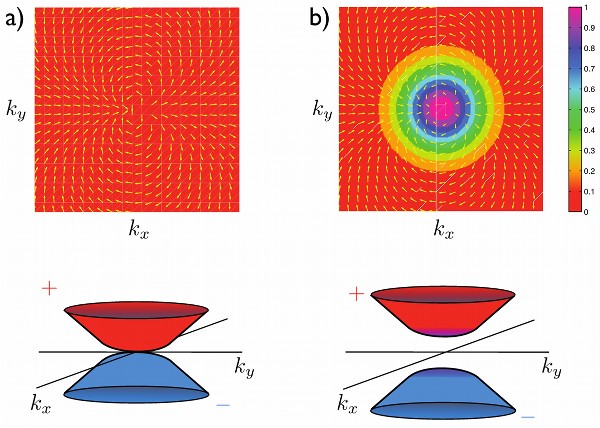|
Physical Society ColloquiumTopological States in Graphene-Based Two-Dimensional Electron SystemsAllan H. MacDonaldDepartment of Physics, University of Texas at AustinGraphene bilayers possess a layer pseudospin degree of freedom that is expressed by two flat bands which cross near the Fermi level. When described in the layer pseudospin language, the conduction and valence band states of bilayer gaphene are characterized by pseudospinors with zero polar angle, corresponding to symmetric occupation of the two layers, and azimuthal angles that specify the momentum-dependent interlayer phase difference. The valence band pseudospin of bilayer graphene has a momentum space texture with vorticity equal to two. I will explain why this property makes graphene bilayers particularly susceptible to the formation of low-temperature broken symmetry states that have gaps in their charged excitation spectrum and broken layer inversion symmetry. The broken symmetry state can be viewed as one in which a core is formed in the momentum space vortex, turning the ground state into a type of Chern insulator which has a quantized anomalous Hall effect. I will discuss what we have learned about these states from recent experiments, and also comment on the potential for pseudospin order1 in other graphene-based two-dimensional electron systems. 
Pseudopin orientations and quasiparticle bands for bilayer graphene.
In the ordered state the x-y components of the quasiparticle pseudospins
(yellow arrows) shorten while the polar component (color scale) develops a
non-zero value. The quasiparticle energy bands (bottom panels) develop a gap
between valence and
conduction bands.
1. A.H. MacDonald, Jeil Jung, and Fan Zhang, Pseudospin Order in Monolayer, Bilayer, and Double Layer Graphene, Physica Scripta T146, 014012 (2012).
Friday, January 11th 2013, 15:30
Ernest Rutherford Physics Building, Keys Auditorium (room 112) |